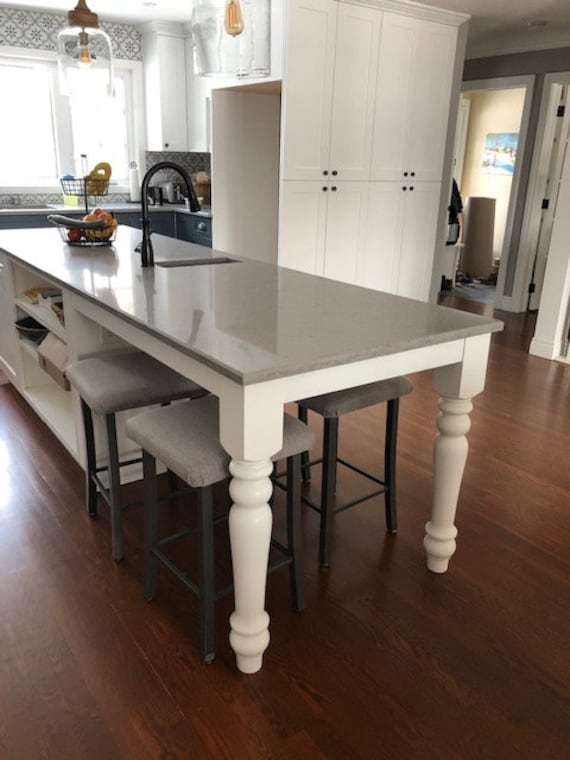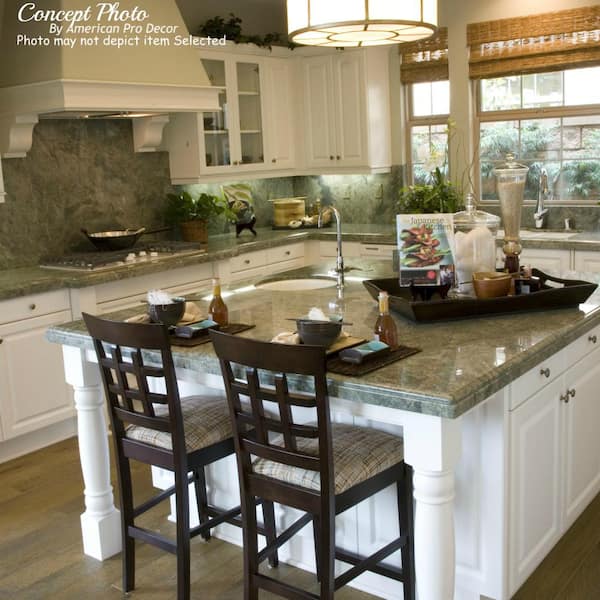Rely Upon Professional Craftsmanship for Tailored Legs For Kitchen Island Concepts
Rely Upon Professional Craftsmanship for Tailored Legs For Kitchen Island Concepts
Blog Article
Necessary Aspects to Think About When Choosing Legs For Kitchen Island
Choosing the proper legs for a kitchen area island includes a careful assessment of multiple factors that can dramatically affect both performance and aesthetic appeal. Amongst these, the option of material plays a pivotal duty in making sure toughness, while the design must enhance the existing decoration. Additionally, considerations such as elevation and weight support are essential for security and comfort. As we check out these components, it comes to be clear that each decision can have far-ranging ramifications for the overall cooking area experience. What nuances should be taken into consideration in each of these classifications to attain the suitable balance?
Product Options
When selecting legs for a kitchen area island, understanding the different product alternatives is vital for attaining both aesthetic charm and architectural honesty (Legs For Kitchen Island). The choice of material dramatically influences not only the toughness of the island yet also its general style and capability
Wood is a popular option, supplying heat and versatility. Solid hardwoods, such as oak or maple, supply toughness and can be stained or painted to match the kitchen design. Steel legs, commonly made from stainless-steel or functioned iron, contribute a industrial and contemporary feel while making sure longevity and security. These products are immune to put on and can sustain significant weight, making them ideal for larger islands.
Another option is crafted products, like MDF or plywood, which can be extra cost-effective while still supplying a variety of coatings. Nonetheless, they might not supply the exact same degree of security as strong wood or steel. Materials such as acrylic or glass can create a modern look, though they may call for extra assistance to make sure stability.
Ultimately, the choice of material for cooking area island legs must align with the wanted performance and the overall motif of the kitchen area.
Design And Style

When considering style, the shape and finish of the legs are crucial. Tapered legs can offer a sense of lightness and beauty, while thicker, more robust legs can convey strength and stability. Additionally, the coating-- be it repainted, tarnished, or all-natural-- must enhance the cabinets and counter top materials to create a unified look.
Moreover, the design of the legs can additionally mirror individual taste. Customized or decorative legs, such as those featuring detailed makings or special geometric shapes, can function as focal points, including personality and personality to the kitchen. Inevitably, the appropriate option will not just enhance functionality but additionally raise the aesthetic allure, making the cooking area island a standout function of the home.
Height Factors To Consider
Selecting the proper elevation for cooking area island legs is vital, as it directly impacts both performance and comfort. The basic height for a cooking area island generally varies from 36 to 42 inches, lining up with common kitchen counter heights. A 36-inch elevation is suitable for food preparation and cooking, permitting comfy use cooking area home appliances and devices. On the other hand, an elevation of 42 inches is typically preferred for islands planned for bar seating, fitting taller stools and using a casual dining experience.

It is additionally vital to represent users' elevations and choices. Personalizing the height can make certain a comfortable experience for all household participants, making the kitchen island an extra useful and pleasurable room.
Weight Assistance
Ensuring ample weight support for cooking area island legs is crucial for both safety and performance. The kitchen island commonly serves numerous purposes, consisting of great post to read food preparation, eating, and additional storage, demanding a robust assistance structure. When choosing legs, it is crucial to think about the overall weight capability called for based on the island's meant usage and the products that will be positioned on it.
The choice of material for the legs plays a substantial role in their weight-bearing abilities. Strong timber, steel, and heavy-duty compounds generally provide superior strength contrasted to lighter materials. In addition, the style of the legs-- whether they are directly, tapered, or have a pedestal form-- can affect their capacity to disperse weight efficiently throughout the framework.
Constantly seek advice from the maker's specs relating to tons limitations to guarantee that the legs can sustain the intended weight without compromising safety. In recap, picking kitchen area island legs with appropriate weight support is important for creating a safe and useful culinary space.
Installment and Upkeep
Correct setup and upkeep of kitchen area island legs are critical for making sure longevity and security. This frequently entails securing the legs to the island base making use of suitable bolts, guaranteeing that the legs are degree and aligned.
When mounted, routine upkeep is necessary to protect the honesty and appearance of the legs - Legs click over here now For Kitchen Island. For wood legs, periodic cleaning with a wet cloth and application of appropriate timber polish can avoid dampness damage and preserve their coating. Steel legs might call for a mild cleaning option to get rid of grease and YOURURL.com gunk, adhered to by a completely dry cloth to stop corrosion formation
Additionally, examine the legs on a regular basis for indicators of wear or damages, such as cracks or loose joints. Tightening screws or bolts as required can also extend the lifespan of the legs. By adhering to these installment and maintenance methods, home owners can make certain that their cooking area island remains sturdy and visually appealing for years to come.
Conclusion

Aesthetic coherence is vital in picking the design and design of legs for a kitchen island, as these aspects considerably affect the total setting of the space. Tapered legs can offer a sense of lightness and sophistication, while thicker, extra durable legs can share toughness and security.Picking the appropriate height for kitchen island legs is essential, as it directly affects both performance and comfort. In summary, selecting kitchen island legs with sufficient weight support is important for creating a risk-free and functional culinary room.
In verdict, picking legs for a cooking area island requires cautious consideration of various factors, consisting of product choices, style, height, weight support, and installment.
Report this page